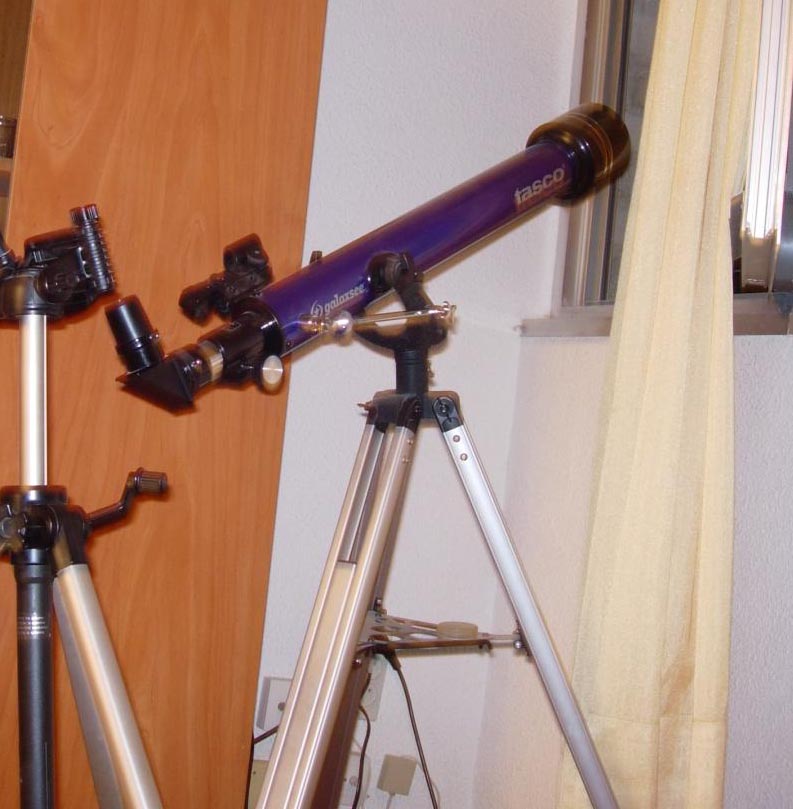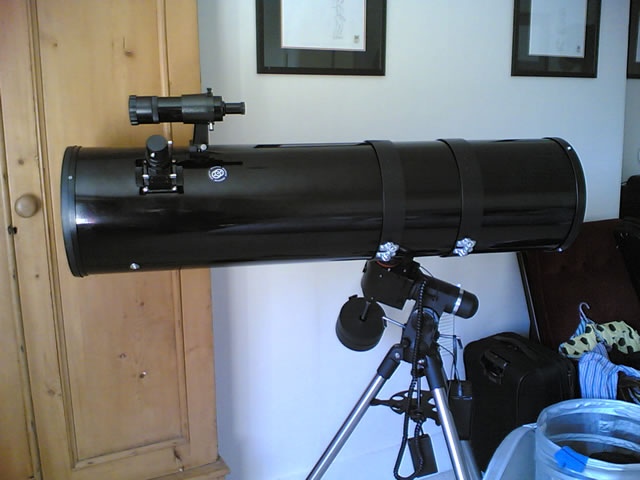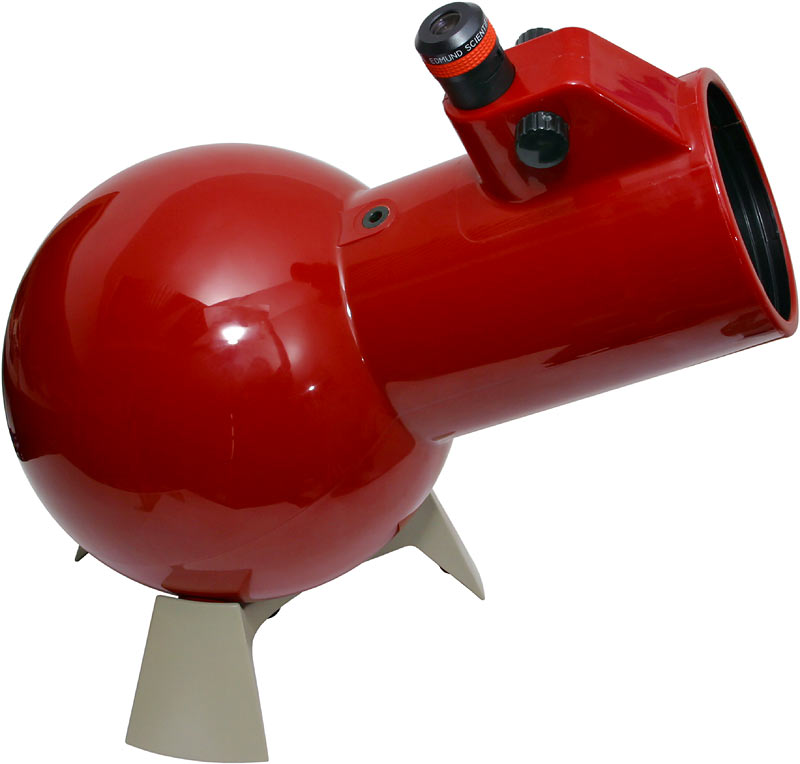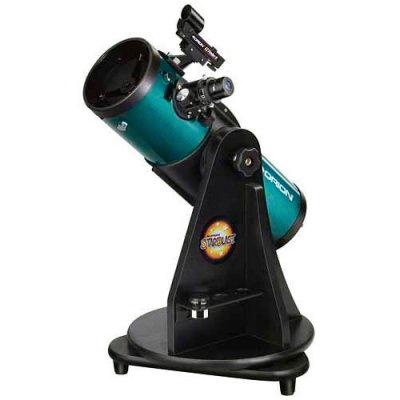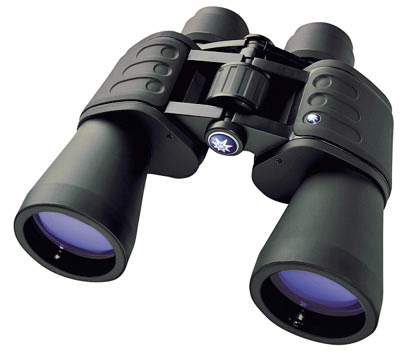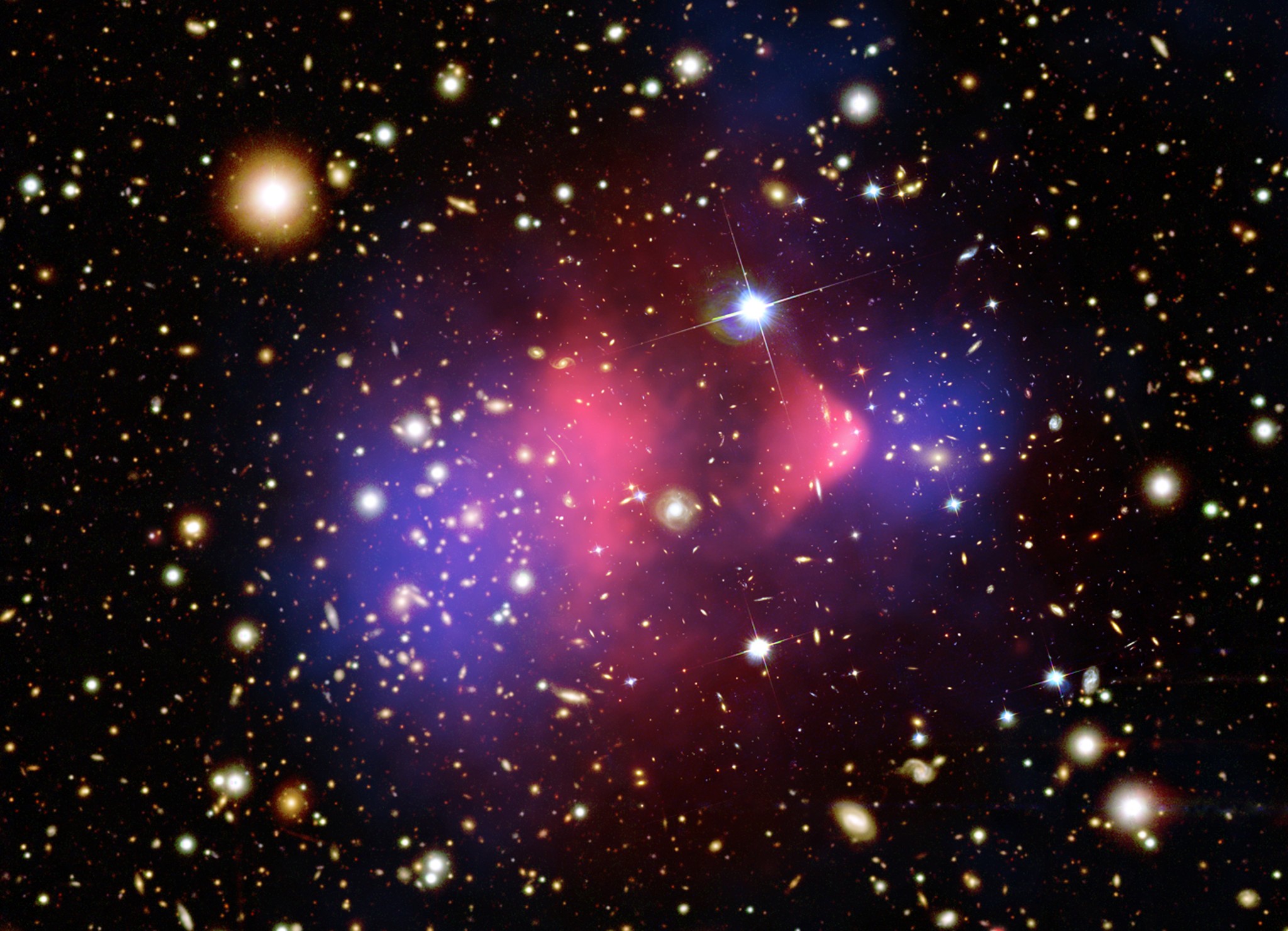 ISS Baby
ISS Baby
You know how I warned you that if I wasn’t careful I was going to turn into the science music video blog? Well … I warned you. Here’s another (thanks Martian Chronicles).
Who says scientists aren’t cool?
 Moon Mission – The Music Video
Moon Mission – The Music Video
If you’re not following Martian Chronicles, you should be. He just linked over to some hilarious NASA music videos.
 Lucy is SO AWESOME
Lucy is SO AWESOME
Seattlites, and anyone who is visiting before March, I just have to say I am so proud of my institution.
We’re hosting Lucy (yes, the Lucy, the 3.2 million-year-old hominid fossil), exhibit to open on Saturday. Not only does the exhibit rock, effectively showing the region in which Lucy was found (Ethiopia), helping you discover for yourself why Lucy is such an important find, and majestically introducing you to Lucy herself … but our marketing department took a big step: the new tagline for Lucy’s Legacy:
“An ancestor to humans in the course of evolution.”
It says it, right on the posters! Phew. Step right up to the plate. There’s no controversy here. (I do have to admit, I might be misremembering the words slightly. I’ll double-check tomorrow.)
Don’t miss Lucy’s Legacy. Really, it’s beautiful and makes you stop and think … and when else are you going to see your great^160000 grandmother? (assuming 20-year generations)
 Carnival of Space: October 2, 2008
Carnival of Space: October 2, 2008
In celebration of NASA’s 50th Anniversary, this week’s Carnival of Space is in the form of an acrostic.
H – Hills and what they have to do with moons are discussed by the Bad Astronomer over at Bad Astronomy
A – All’s quiet on the solar front, should we be worried? Alan Dyer of What’s Up Astronomy says “Nope.”
P – Posted by Space Video of the Day: the Falcon of SpaceX achieves orbit!
P – Poor Galileo – his saga is like a Mexican Soap Opera, or so claims Dr. Bruce Cordell of 21st Century Waves.
Y – Yummy planetary science from Maria Brumm and Green Gabbro.
B – Back in 1989 a program called Lunar Oasis was proposed, and David Portree examines it over at Altair VI.
I – Interstellar flight in a long-term context. Paul Gilster analyzes the survival of civilization and expansion into the cosmos over at Centauri Dreams.
R – Research the history of the NASA meatball and worm with Astroprof this week, in celebration of NASA’s 50th Birthday!
T – Trouble comes to Hubble, and Steinn Sigurðsson of Dynamics of Cats takes a look at what the problem is.
H – Huge telescopes held in place by magnetic flux pinning and other giant mirrors are approached by Next Big Future.
D – (the) Death of a Martian moonlet is exposed by Ryan Anderson Briony of Martian Chronicles.
A – Approaching martian winter, Ray Villard of CosmicRAY talks about Phoenix’s limited future and extensive past discoveries
Y – You know analogies always help, so Wayne of Idea Festival reviews J. Richard Gott’s discussion of the Space Colonization Imperative, and how it’s similar to basketball and the Titanic.
T – To NASA! 50 years of exploration and collectibles, discussed by none other than collectSPACE.
O – On counting stars and cells – Ethan Siegel of Starts With A Bang wonders which is bigger, the number of stars in a galaxy, or the number of cells in the human body
Y – Yikes! Watch out for unruly astrophysicists wielding calculations over at the Lounge of the Lab Lemming (by Dr. Lemming)
O – Oh my, iPhone apps galore – including an awesome Starmap & Planetarium app reviewed by Flying Singer in Music of the Spheres.
U – Universal Babe (I mean, A Babe in the Universe!) discusses Hubble’s difficulties this past week.
D – Decelrating oddly, the Pioneer spacecraft are veering off course. Twisted Physics’ Jennifer Ouellette looks at why.
E – ESA’s new Planck spacecraft‘s plant (oops, typo) plans to look at the Cosmic Microwave Background Radiation is discussed in detail by dj at OrbitalHub.
A – Accretionary Wedge, the carnival from the Geoblogosphere was hosted this past week. Check out GoodSchist’s artwork about Geology in Spaaaaace.
R- Research meets poetry with “Endeavour Calls” by Stuart Atkinson of The ‘Verse.
N – Nuclear decay rates, are they related to the distance to the Sun? Ian O’Neill of astroENGINE tackles this question, by looking at the Cassini mission.
A – “Action on Asteroids!” says Alan Boyle in Cosmic Log.
S – Shubber Ali of Space Cynic is interviewed on The Space Show.
A – Anniversaries (specifically NASA’s) are celebrated over at Potentia Tenebras Repellendi by Alexander Declama
! – !! I wish I had an “M” for Emily Lakdawalla’s Monday Mercury MESSENGER Madness in the Planetary Society Weblog!!
That’s it for this week! Tune in somewhere else to next week’s Carnival for more – or go to Universe Today’s Carnival of Space page to learn what it’s all about. Thanks for your entries, and thanks for your help, Fraser!
 What Telescope Should I Buy?
What Telescope Should I Buy?
I get asked this question regularly. I wish I could just say “learn enough about telescopes and the night sky so you can answer that question yourself,” but that advice is ignored because it is unsatisfactory. If you press me for an answer, this is what you’ll get.
Half of this is from guest blogger Keith Enevoldsen (my dad!) who didn’t know he was writing for this blog when he wrote these words, but it is sound advice and well worded.
Your First Telescope:
Whatever you do, don’t buy a scope that “looks like a telescope.” What I mean is, if it looks like a long thin tube, or you can picture Galileo using it, it’s the wrong thing. You want something short and fat. “Willowy,” “elegant,” and “sleek” are not the right words to describe the right telescope.
Price:
Telescopes less than about $200 generally have poor optics. If you want to go much below about $200, then get some quality binoculars instead.
AstroScan:
My favorite beginner telescope is the Astroscan from Scientifics. It is about $200. It’s cute and fun and simple. It has a very wide field of view (as opposed to very high magnifying power) and a ball-shaped bottom, so you can point it by simply moving it with your hands — no fiddly knobs and no computer to figure out. It’s easy to take camping where skies are dark. You just plop it on the ground or on a table or on the hood of your car. You can get a tripod for it if you want one, but you don’t need one.
Orion StarBlast:
The other decent scope in that price range is the Orion StarBlast. It’s basically an AstroScan in a different shape. The mount is very easy to manipulate – just grab and point. It has a more complex finder-scope on the side than the AstroScan, which means it’s easier to mess up, but it is also slightly easier to use than the AstroScan’s sight.
I also have to admit that Orion got me with this one. They donated a StarBlast to PSC. I was quite skeptical at first, since I love the AstroScan, and I didn’t believe that anything could measure up. After I used it a few times I was sold. It’s a good scope. If I were buying a new scope, I’d buy an AstroScan, but this would be a close second.
Both of these scopes are compatible with all the normal-sized eyepieces available on the market. Most telescopes you get from a department store use a different sized opening, so you need to use their eyepieces, and you can’t slowly upgrade over time.
Binoculars:
Good binoculars and a tripod are usually the best option for beginning stargazers, but the scopes we mentioned are pretty close to just as good. We use the Meade Travelview 7x50s (about $30) here at Pacific Science Center, though anything that seems decent will work – even little birding binocs. If you want to be a little bit careful about your binoculars, get a pair of 7x50s from a company that you’ve heard of.
What’s Good for Beginners To Look At:
Remember, the Moon is by far the best thing to look at in the sky. The Moon looks huge and fantastic with a wide-field telescope like the Astroscan — you can see the whole Moon and lots of craters. The Moon also looks pretty good through good binoculars. The Moon changes every day — you see different craters each day. You don’t need dark skies to see the Moon. You can see some other things with a backyard telescope (that you can’t see with binoculars), like the rings of Saturn, and nebulas, but almost everything is very tiny or very faint compared to the Moon.
If you want higher magnification, so you can clearly see the stripes on Jupiter, the icecaps on Mars, and the gap in the rings of Saturn, then you will have the problem of how to accurately point a telescope with high magnification, and how to continually move the telescope to counteract the turning of the earth. The best solution is to use a computer and a motor to point the telescope, but this gets expensive. But the cheaper manual fiddly knobs are a pain. Also, if you don’t use a computer to aim your telescope, you need to be sure you have a good finder scope mounted on the side.
This is why I recommend a wide-field telescope like the AstroScan (or good binoculars) for beginners.
Want More?
Sky and Telescope’s advice:
Basics of Telescope Buying
Buying a Telescope as a Gift
More detailed advice:
Keith & Alice Enevoldsen
 Two Ways to Support AstroInfo
Two Ways to Support AstroInfo
I assume since you’re reading this, you like what I’ve been writing. Great. Here are two ways to support Alice’s AstroInfo.
This one directly supports AstroInfo, because it supports my organization and my organization pays me to write the articles that I also post here:
Support Pacific Science Center
This one supports that which AstroInfo stands for (cool astronomy education for anyone who wants it):
International Year of Astronomy: US Branch
International Year of Astronomy: International Umbrella Organization
The International Year of Astronomy is making a BIG push for astronomy education for the masses throughout the year of 2009. I’ve got a project and a half up my sleeve (you’ll be hearing about them as they occur), but IYA needs money and hours to make IYA as big as they want it to be.
… back to our regularly scheduled programming … up next – more details about Haumea (I hope).
 No Podcasts
No Podcasts
In case you hadn’t noticed, I’m suspending podcasting for a while. If I hear an outcry I may bring it back, but until then you’ll have to call the planetarium hotline for your audio fix: 206-443-2920.
Note: this is NOT the same audio as AstroInfo, and it’s updated less often, but it’s something!
 A List of Dwarf Planets
A List of Dwarf Planets
Updated September 18, 2008
Haumea:
Diameter: 1,320-1,550 km
Orbit Radius: 35.161-51.525 AU
Moons: Hi’iaka and Namaka
Composition: almost all rock
Discovered: 2003 Mike Brown, Chad Trujillo, and David Rabinowitz or Francisco José Aceituno Castro, Pablo Santos-Sanz, and Jose-Luis Ortiz
Resource: http://www.planetary.org/blog/article/00001649/, http://web.gps.caltech.edu/~mbrown/2003EL61/
Other Classifications: Plutoids, Trans-Neptunian Object, Kuiper Belt Object
Make-make:
Diameter: 1,600 km
Orbit Radius: 38.666-52.809 AU
Moons: ?
Composition: ?
Discovered: 2005 Mike Brown, Chad Trujillo, and David Rabinowitz
Resource: http://www.planetary.org/blog/article/00001553,
http://www.mikebrownsplanets.com/2008/06/whats-in-name.html
Other Classifications: Plutoids, Trans-Neptunian Object, Kuiper Belt Object
Eris:
Diameter: 2400 km
Orbit Radius: 38.17- 97.61 AU
Moon: Dysnomia
Composition: roughly half rock, half ice
Discovered: 2003-2005 Mike Brown, Chad Trujillo, and David Rabinowitz
Resource: http://www.planetary.org/explore/topics/trans_neptunian_objects/eris.html
http://web.gps.caltech.edu/~mbrown/planetlila/
Other Classifications: Plutoids, Trans-Neptunian Object, Kuiper Belt Object
Ceres:
Diameter: 950 km
Orbit Radius: 2.98 AU
Moons: none
Composition: rock with 17-27% water ice
Discovered: 1801 by Guiseppe Piazzi
Resource: http://www.planetary.org/explore/topics/asteroids_and_comets/ceres.html
Other Classifications: Asteroid
Pluto:
Diameter: 2,306 km
Orbit Radius: 30.164- 48.494 AU
Moons: Charon, Nix, Hydra
Composition: probably a mixture of 70% rock and 30% water ice
Discovered: 1930 by Clyde Tombaugh
Resource: http://www.nineplanets.org/pluto.html
Other Classifications: Plutoids, Trans-Neptunian Object, Kuiper Belt Object
Want More?
Planetary Names List of Dwarf Planets
Planetary Society List of Notable Trans-Neptunian Objects
Where’d I Get My Info?
Thanks to Mike Brown, Emily Lakdawalla, and Bill Arnett
 Seattleites: Come to Science with a Twist!
Seattleites: Come to Science with a Twist!
I thought you all might be specifically interested in this month’s Science with a Twist (science for a 21 and over audience) here at Pacific Science Center. The topic of the fun, interactive evening is “Are We Alone?”
Science with a Twist presents “Are We Alone?”
Thursday, September 18
6:00 – 9:00 p.m.
Alien encounters – fact or fiction? Sip on eerie cocktails while exploring other galaxies in our planetarium, listen to accounts of extraterrestrial sightings and then decide for yourself if you are a believer! The evening begins with a paranormal happy hour featuring a presentation by Joe Hutchings, member of the Society for Sensible Explanations, entitled “Why Skeptics Can’t Win,” followed by “UFOs of the Northwest” presented by Charlette LeFevre and Philip Lipson, curators of Seattle’s Museum of the Mysteries. Decide if we are truly alone and then end the evening with a private space-themed Laser Show in the Seattle Laser Dome.
6 p.m. Happy Hour & Presentations
8 p.m. Laser show
Click →here to purchase tickets. Tickets include your first drink from the bar and snacks. $15 per person; $12 for Pacific Science Center members. 21+, ID Required.
Information at: http://www.pacsci.org/twist/
I’ll be there, doing some activities with you about exoplanets.
 Why I Believe (In Dark Matter)
Why I Believe (In Dark Matter)
The Short Answer: (If you don’t read anything else, read this)
Using the force of gravity, astrophysicists predict the existence of a “dark matter” particle. It would make their math work out correctly. Particle physicists predict the existence of a particle with the EXACT same characteristics as the “dark matter particle,” but their predictions are based on the strong and weak forces – which are completely independent from gravity.
The Story and Explanation:
Up until June 2008 I didn’t believe that dark matter was really the best explanation for the inaccuracies that lead to the theory of dark matter. So at the American Astronomical Society conference I went seeking someone who could convince me that dark matter really was the best theory. I found someone.
Why Dark Matter Was Proposed:
You can calculate the mass of things in space based on how they move. You can also look at things in space, and knowing what they’re made of, you can total up what you think they should “weigh” based on how much stuff you can see.
When you weigh a galaxy based on motion you get a mass that’s double or more what you get when you total up the mass of all the the stars, dust, gas, and black holes that you think are actually there. Obviously there’s something missing, something you can’t see. This invisible stuff is called “dark matter.”
Why I Liked Modified Newtonian Dynamics (MOND):
I believe in human fallibility. We’ve gotten so much physics so wrong in the past (We used to think the Earth was the center of the solar system!), that the simplest answer is probably that we just don’t know all the laws of physics yet. Why believe that there’s invisible stuff in the universe, when you can just change the math?
That’s what MOND says: we’re doing the math wrong. If you change the math in a certain way, it matches our observations better, and you don’t need some mysterious invisible matter. MOND’s specific way of changing the math works for galaxies, but it doesn’t apply to anything else. In fact, it makes that math for other physics not work very well at all. So, I agree, MOND itself is wrong, but maybe there’s another change we could make to the math instead.
What Convinced Me:
There is another, simple change you can make to the math to make it work: add a “dark matter particle.” If you account for these particles in your math, everything works. Yeah, pretty much everything.
More importantly particle physicists have also predicted the existence of a “dark matter particle.” Particle physicists are doing completely different math than astrophysicists. Astrophysicists use gravitational force and electromagnetic force (light) to do all their observations and calculations. Particle physicists are working on a different scale: they can have laboratories and manipulate particles, and the elementary forces they study are the strong force and the weak force. This means that they independently came up with the need for a “dark matter particle.” They weren’t even solving the same equations. They were truly independent.
Paul Sutter, the grad student I was speaking with says, if they fail to detect dark matter particles with the Large Hadron Collider within the next 10 years, then the theory should be reexamined. Until then, it’s pretty likely.
Want More?
Bullet Cluster
About Dark Matter
LHC and Dark Matter
Where’d I Get My Info?
I spoke with a grad student, Paul Sutter, at the University of Illinois who is studying dark matter.


